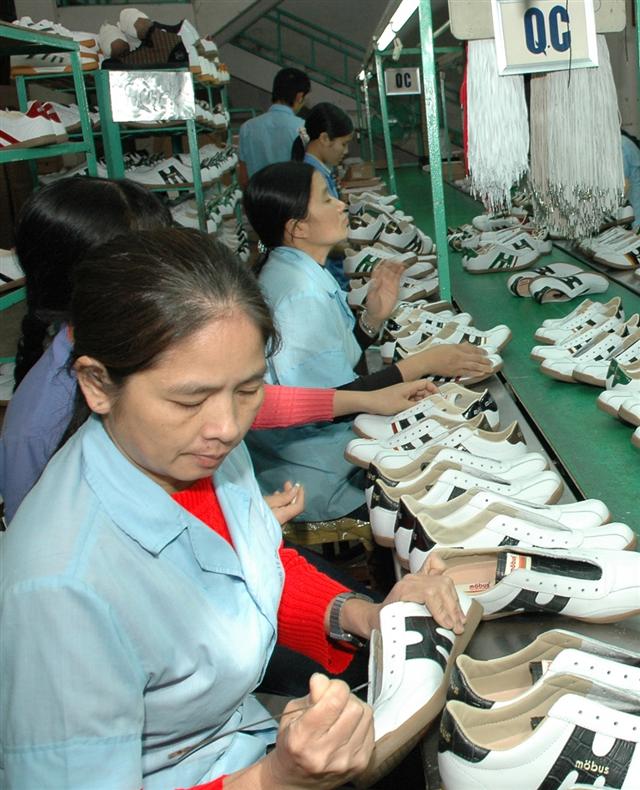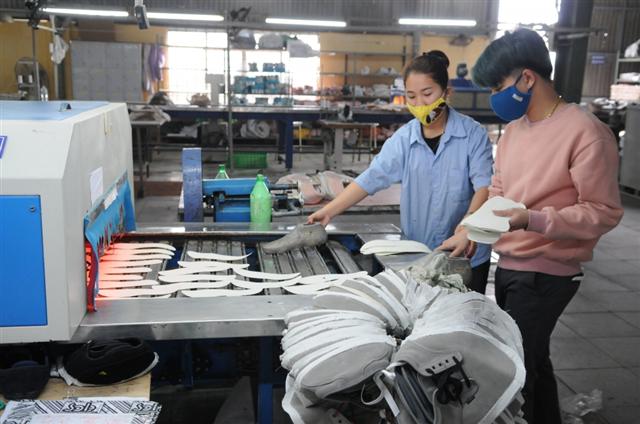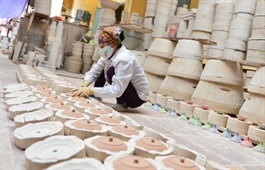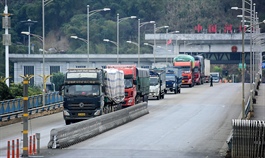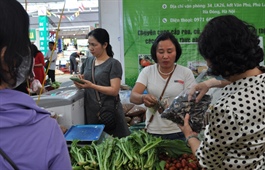Leather, footwear exports take step forward
Leather, footwear exports take step forward
According to the Ministry of Industry and Trade, export turnover of the leather and footwear sector is likely to resume growth in the fourth quarter of this year.
|
Gradual recovery
A ministry report reveals that after a strong decline in the second quarter, orders at leather and footwear companies began to recover in the third quarter. Manufacturers such as the An Thinh Footwear Co., Ltd., the Lien Phat Co., Ltd., and the Gia Dinh Group have received production orders until the end of the year and started rehiring workers.
Footwear production was estimated at 31 million pairs in October, an increase of 5.3 percent compared to the previous month and 11.8 percent compared to a year ago. In the first 10 months of the year, production was estimated at 249.1 million pairs, a year-on-year increase of 0.8 percent. Leather and footwear exports reached an estimated US$13.38 billion during the January-October period, a drop of 9.9 percent compared to the same period last year. Vietnamese footwear products have benefitted since the EU-Vietnam Free Trade Agreement (EVFTA) took effect on August 1.
According to the Agency of Foreign Trade under the Ministry of Industry and Trade, as of October 12, agencies granted about 23,800 sets of C/Os (certificates of origin) worth US$963 million, enabling exports of Vietnamese products to 27 EU countries. The goods are mainly footwear, seafood, plastics and plastic products, coffee, garments and textiles, bags, suitcases, vegetables, rattan, bamboo, and knitting products. The value of the C/Os granted for footwear exports to the EU reached nearly US$391 million in August and September.
Despite the recovery in orders, numbers remain modest due to low consumption caused by the Covid-19 pandemic, according to the Ministry of Industry and Trade.
|
Restructuring plan
The EVFTA is expected to be a big growth driver for the leather and footwear sector in the remaining months of 2020 and beyond. However, not many companies are able to exploit the deal’s advantages. Some 85 percent of the 1,700 footwear companies in Vietnam face limitations in terms of capital, techniques and technology, and materials.
In addition, they are also largely dependent on foreign customers. Phan Thi Thanh Xuan, deputy chair and secretary-general of the Vietnam Leather, Footwear and Handbag Association (Lefaso), said Vietnamese companies have yet to be active in approaching markets and also face problems in terms of human resources and infrastructure.
According to experts, leather, footwear, and handbag companies should increase the local content in their products to meet EVFTA criteria regarding origin. The state and businesses should work closely together to optimize the pact’s opportunities.
Many companies have made preparations to restructure, upgraded their infrastructure, and secured material sources to meet EVFTA requirements, while striving to enhance product quality.
| The leather and footwear sector’s target of US$24 billion in this year’s exports seems impossible, but future shifts in global supply chains may help increase its market share. |


